A fan’s subjective perspective on the early stages and evolution of traditional animation. It’s been a while since I’ve made my last post about animation, I’ve been sitting on this research for a while though. If there actually any returning visitors to this blog: I hope you can forgive my procrastinating ways. I promise I will be a better person soon. I just have to do this other thing first. Anyway: I ended up with 20+ pages of videos, so I’ll make a post for every large animation studio and one for some smaller but possibly very interesting ones! Since I already talked about some Disney movies, I’ll start off completing the work for that studio post-Snow White until about 1949. So here are all my favorite Disney cartoons from 1937-1949, all in neat chronological order. You’re welcome!
Disney Cartoons 1937-1949: Post-Snow White
After the success of Snow White. Disney Studios was swimming in cash and made plans for a bigger, shinier studio, to be opened in 1939. Because the production quality was so consistent in these years, it’s getting harder to figure out at a glance where the stand out animation is. But I’ll give it a shot.
Mickey, Donald & Goofy – Lonesome Ghosts, 1937
The gang hunting ghosts in a haunted mansion. Love the surroundings. Very elaborate short. Lots of things going on. Great characterization. The main inspiration for Ghostbusters?
Great gag at the start and wacky trailer fun. At least two or three memorable moments in this one.
Silly Symphonies – Wynken, Blynken and Nod, 1938
D’aww!! So cute and dreamy-like. Summary: toddler with multiple personality disorder has an out-of-body experience and goes dreamsailing through the stars. You’re probably sold by the premise already but the real star is the sparkly animation. At this point in time, the Silly Symphonies were a great playground for experimentation, but were also getting more and more expensive. Because of this, series had its last entry in 1939.
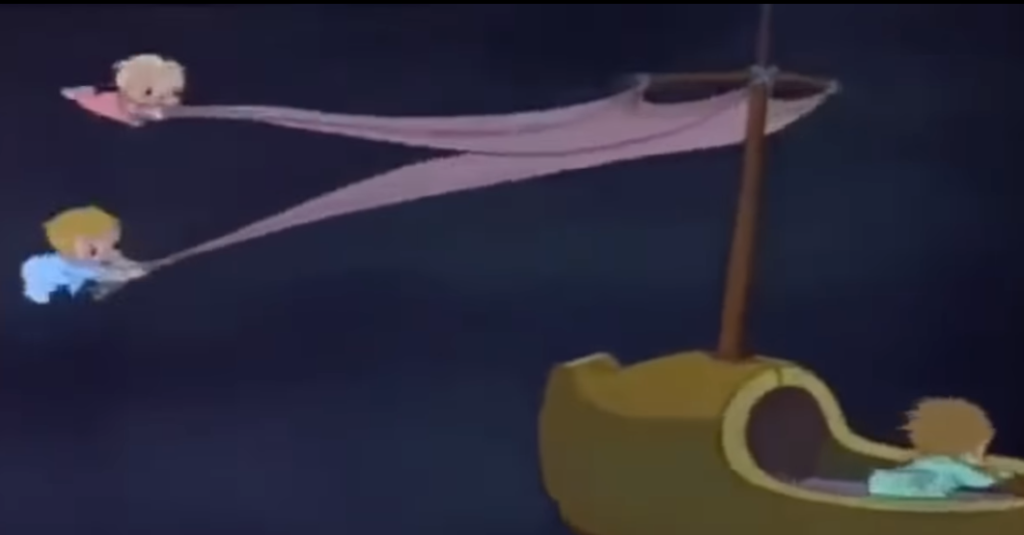
Mickey Mouse – The Brave Little Tailor, 1938
Everything is top notch here. Great story build up for a short cartoon. Excellent animation on the characters. They must’ve hurled money and resources at this cartoon. The character of the giant, animated by Vladmir “Bill” Tytla is also a big reason it was chosen in 1994 as the 26th greatest cartoon of all time by members of the animating field. Tytla was considered a “personality specializer” or something and had animated giants before on several occasions. Some people have noted similarities to The Brave Little Tailor in Disney’s own Hercules. There’s a great little sequence where Mickey’s in the giant’s mouth similar to Giantland. They made it even cooler this time.
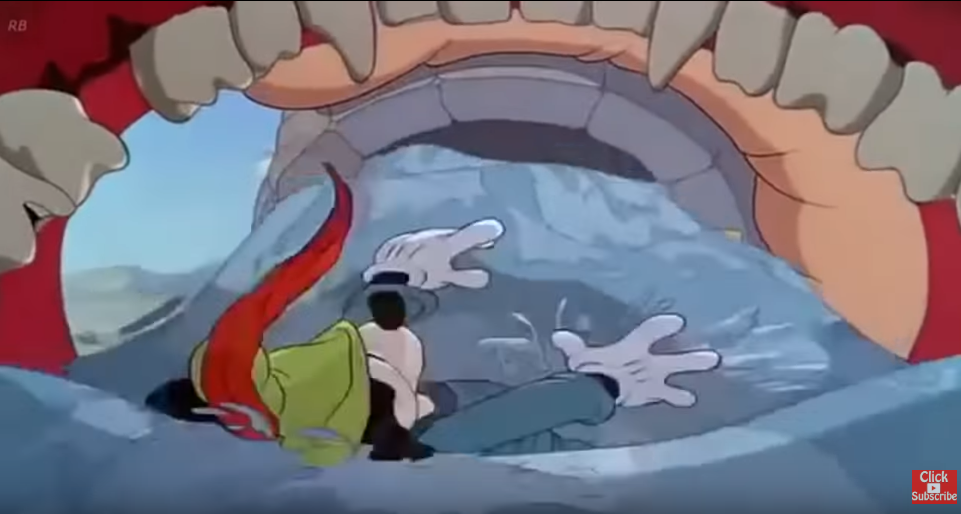
Silly Symphony – Farmyard Symphony, 1938
A Silly Symphony featuring animals and musicals, nothing new? Except none of them are dancing, and they all behave like actual animals. Revolutionary! Pastoral and peaceful, featuring a lot of parent/child combinations, which makes for a very endearing watch.
Ferdinand the Bull, 1938
Academy Award winner. Stand alone short, not a Silly Symphony, so it was singled out for some reason and got special treatment. A narrator tells the story, which is set in a rarely visited setting: Spain. Great, another country to be stereotypical about. Alot of human characters are shown, also quite a rarity for Disney cartoons. Nice story. Lovely final shot.
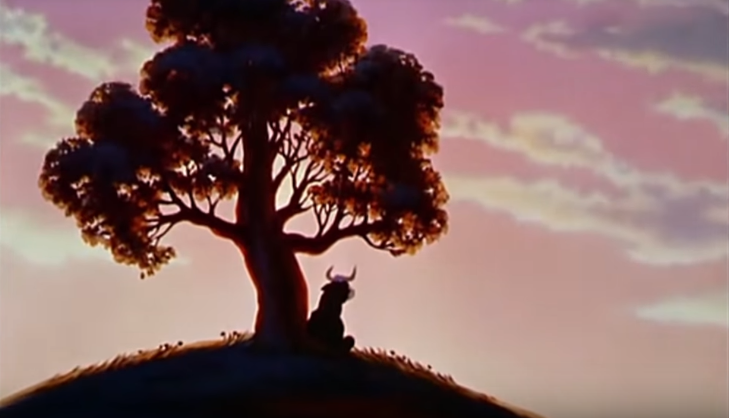
Film noir inspired.
New design for Mickey. There’s something about the shadows that feels significant… oh well.
Silly Symphonies – The Ugly Duckling, 1939
It’s no Neon Genesis Evangelion, but this will break your heart. Last Silly Symphony. Disney animation at its best. Academy Award winner.
Mickey Mouse – The Pointer, 1939
Praised for the background art and Mickey’s acting, personally staged by Walt Disney. The background work seems so be getting better, or at least given a more significant style to support the animation. Another good example: Officer Duck.
Disney Cartoons: Post-Pinocchio
After Pinocchio, there’s not much more animated goodness to look for in the short cartoons. It’s clear they focused their biggest efforts on the feature films. Because of the experience they had with these characters, the animation on Donald, Goofy, Mickey and Pluto was still the very best in the world. But there weren’t many standout shorts anymore. I kept watching for laughs tho, and kept a list of some fun ones.
Donald Duck – Mr Duck Steps Out, 1940
More modern music for the day. Turns into a weird surreal Silly Symphony.
Basically Pluto in a house of mirrors with constant stretching and bending of his figure and the animators having fun with it. Bit a throwback to early Disney gag animation and a promise for more experimental stuff in the future.
Goofy – Goofy’s Glider, 1940
The first of Goofy’s “how to” videos. I love how they build up the anticipation in each gag. You see him set up the correct movement and then you slowly watch him fail all over again, culminating in him rocketing himself off into space. Props to Jack Kinney, the main Goofy director.
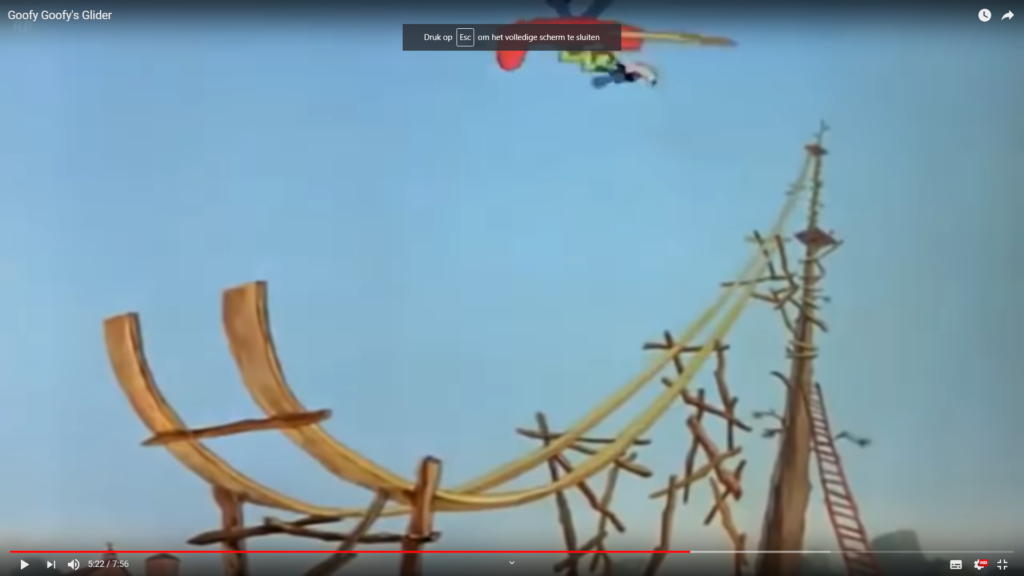
Other “how to” videos: How to play baseball , How to Swim
Mickey Mouse – The Little Whirlwind, 1941
A rare Mickey short from this era, but exceptional animation on two instances: when Mickey floats through the air, dragged along by the smell of Minnie’s cake, and the tornado sequence, inspired by The Band Concert, but executed a lot differently.
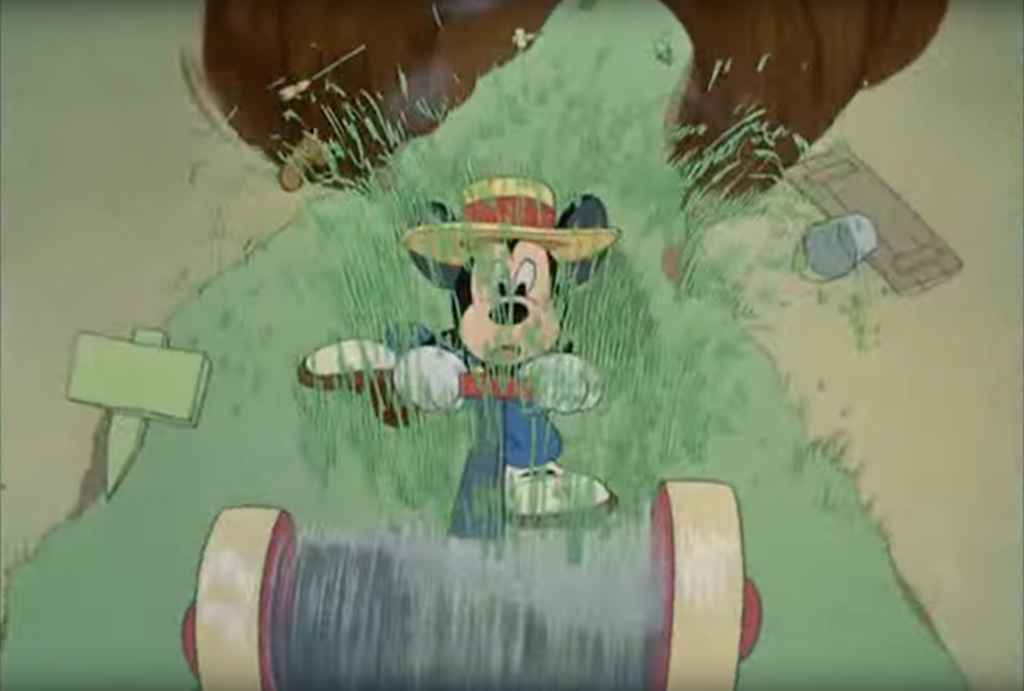
Disney Cartoons: Post-Fantasia
Because of the war and Fantasia’s poor box office reception, Disney faced financial difficulties. As one solution for this problems, he whored out his own characters and solicited to make propagandafilms like The Three Pigs and The Seven Dwarfs. In general, I’m beginning to notice them reusing old footage and resorting to draw repetitive movements for the characters and simpler backgrounds. Basically downgrading to anime.
Behind the scenes: The Reluctant Dragon, 1941
A mix of live action and animation. The viewer gets a tour of the Disney studio and a thorough look into the animation process, background work, music and sound effects. With some nicely animation clips, including a preview of Bambi.
Saludos Amigos, 1942
From 1943-1949 Disney didn’t release any feature-length. Some package films with several short segments were produced instead. The first segment Lake Titicaca has some nice paintec pictures and features Donald in South America. The second segment Pedro stars a cute anthropomorphic airplane. There’s a Goofy part called El Gaucho Goofy. The last part Aquarela do Brasil breaks the fourth wall with a hand and pencil that draw and color in the action.
From 1941 Disney became all but a propaganda machine for the government. Several Mickey, Donald and Goofy shorts were used to get people to enlist, glorify (and at rare instances protest) war and charicaturize the nazi’s and the Japanese. A whole film about the history of aviation was hurriedly produced with limited animation called Victory Through Air Power. The film is said to have caught the attention of Winston Churchill and Franklin Roosevelt, who after watching it are claimed to have made the commitment to long-range bombing. Here’s another good example of Disney’s war propaganda.
Donald Duck – Der Fuehrer’s Face, 1943
Donald dreams about being a nazi and working in a factory that makes bomb shells. Then he goes crazy, wakes up and thanks Lady Liberty he lives in America.
A very effective visual metaphor. This cartoon was used to keep citizens calm during the war.
In case you’re interested, here are some firsts:
Goofy – How to Play Football, 1944
One of the most well-known Goofy How to-videos. Disney Film Project explains it well: “It mocks the “chaos” of the game and even has a joke where the narrator’s explanation of the rules is muffled by the cheers of the crowd, implying that the rules are less than important … In the end, the short manages to tell the story of a full game, mixed with gags while also highlighting some of the intricacies of football. That’s not easy to do.”
The Three Caballeros, 1944
Another package film. Here’s a part of the Bahia segement. Here’s a good example clip of the mix of painted stills, animated characters and live action that is seen throughout the film. Donald has a lovesick spacy trip at the end in Donald’s Surreal Reverie.
Donald Duck – Cured Duck, 1945
Donald undergoes some thorough character development. He has one final temper outburst, where he manages to destroy the entire house. Of course Daisy is like “what the hell, Donald, you broke the house” and kicks him out. Apparently she doesn’t need him to fix it. Anyway, after this episode, Donald supposedly doesn’t have any large anger attacks anymore.
Make Mine Music, 1946
Disney’s third anthology film, with ten segments set to music. There are some normal comedy pieces. But my favorite shorts are the experimental ones. Highlights:
Blue Bayou was originally intended to be in Fantasia. I can see why they cut it out, nothing much seems to happen. It’s actually a very subtle piece about a bird, uh a stork? Let’s say it’s a stork. The stork wanders a bayou alone, everything’s blue and loneliness and you get the picture. At the end, he finds a mate and flies off. So you see, it seems very boring. But I loved it and so should you.
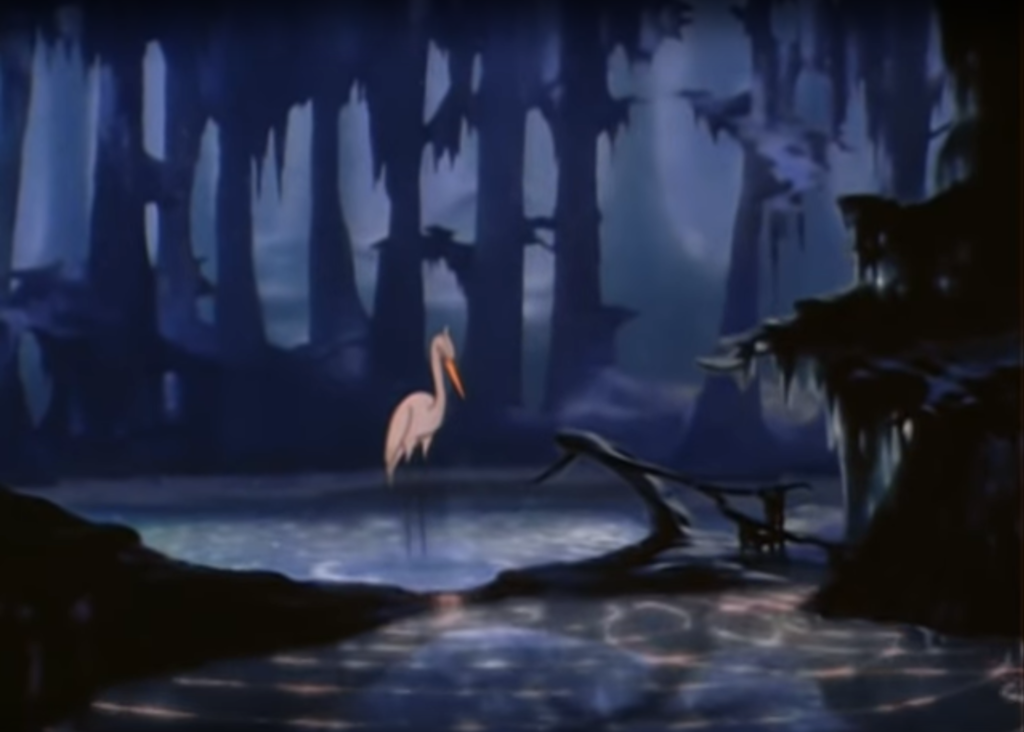
In All the Cats Join In a pencil tries to keep up with drawing the characters in the action.
Without You is an abstract short set to a ballad of lost love. The visuals seem to consist of moving to and from just a few key frames. It’s all very minimalistic and it would be very hard to sell on its own, so I guess that’s why they put it in here.
Two Silhouettes is just, well, yea, two silhouettes doing a slow ballet dance in a lovely magical forest setting. Petals flying around, dancing on clouds. We’ve all been there. Sadly rotoscoping was used on the dancers. Cheaters.
Peter and the Wolf from 23:30. I’ve seen this before. Every character from this famous piece by Prokofiev gets an introduction where their musical theme gets its own animated treatment. The rest of the short is smooth Disney animation.
Johnny Fedora and Alice Bluebonnet. Not sure how to make this not sound ridiculous, but it’s about two hats who fell in love in a department store, get separated and eventually meet up again by chance.
Fun and Fancy Free, 1947
Package film that helped finance later features. Not very notable, like most Disney releases the last couple of years. But at least Bongo has some nice messages .
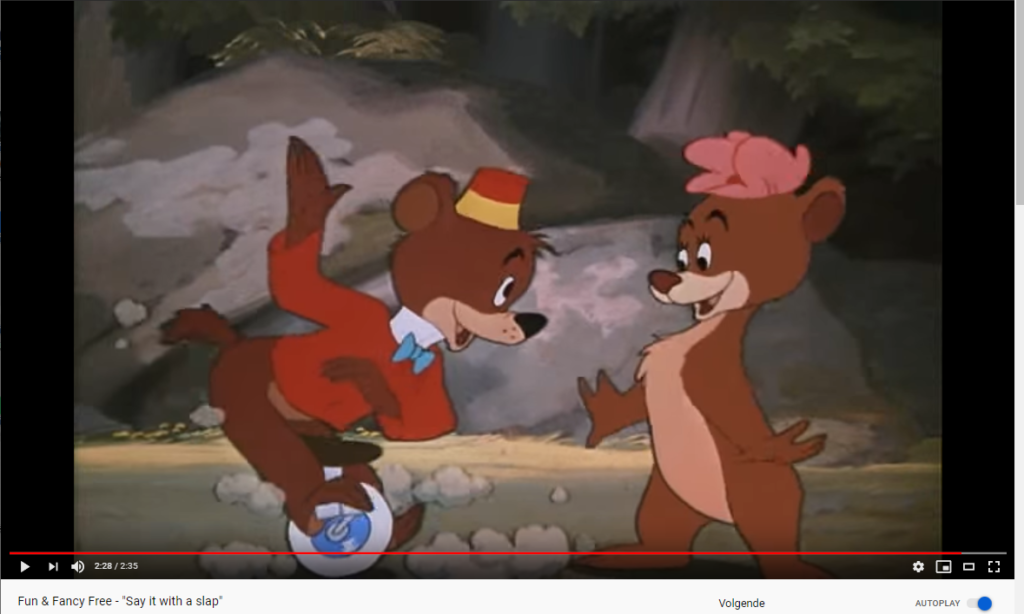
And I love Donald hunger-induced nervous breakdown in Mickey and the Beanstalk. Donald as you’ve never seen him before.
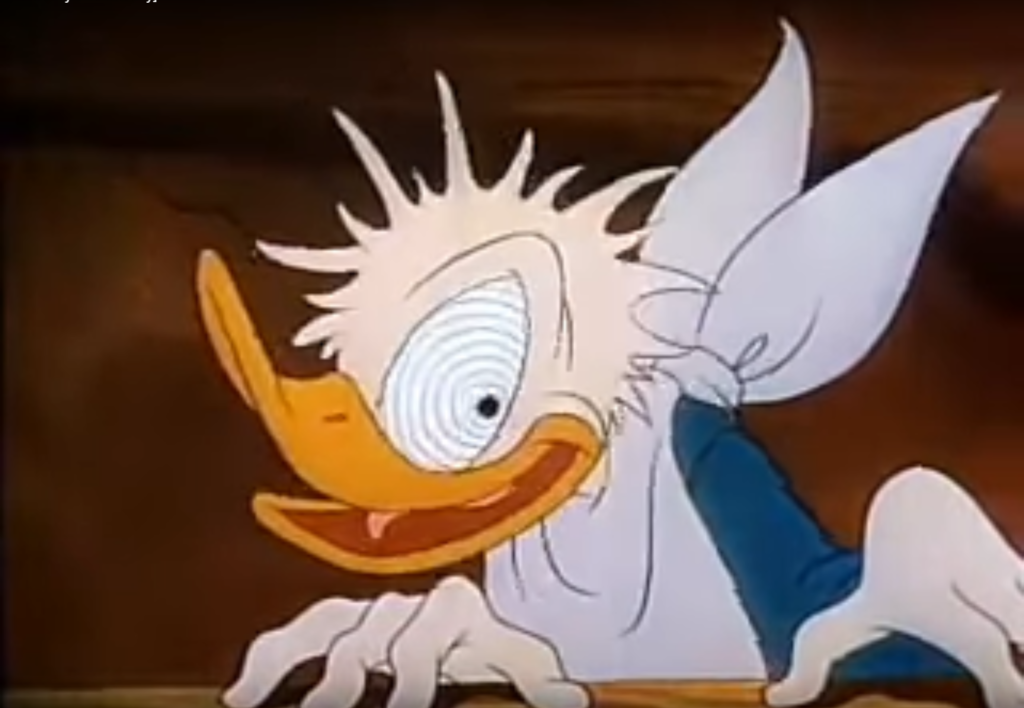
Melody Time, 1948
Fifth package film. There’s some creative work done here and it features pieces that were considered for Fantasia. Once Upon a Wintertime and Johnny Appleseed show a different style on the lay outs (Mary Blair). Bumble Boogie is a light spirited Fantasia-like short. Trees is a wonderful animation experiment. Dr. W. Ikipedia describes it like this: “To preserve the look of the original story sketches, layout artist Ken O’Connor came up with the idea of using frosted cels and render the pastel images right onto the cel. Before being photographed each cel was laminated in clear lacquer to protect the pastel. The result was a look that had never been seen in animation before.”
The Adventures of Ichabod and Mr. Toad, 1949
Last package film before Disney started producing full length feature films again. There’s two segments: The Wind in the Willows, starring mr. Toad and The Legend of Sleepy Hollow, starring Ichabod. This clip is from The Wind in the Willows. You can safely put this next to older Disney stuff and see the evolution, very pleasing to the eyes.
In this clip from The Legend of Sleepy Hollow about the headless horseman, I feel Disney proves they’ve made enormous leaps in animating human characters. Considerable amount of detail seems to have gone into Ichabod’s various emotional states and caricaturized gestures.
The most exciting scene features the actual Headless Horseman. A very scary presence, but an oddly comical scene.
Whew, I’m glad I got all that off my chest. Did I skip your favorite Mickey? Tell me in the comments!
Next up: Warner Bros’ Looney Tunes and Merrie Melodies (1937-1949)
Previous posts:
– Early stages of animation: 1920-1937 – The rise of cartoons
– Disney’s Snow White and the Seven Dwarves (1937) – Golden Age of Animation
– Disney’s Pinocchio (1940) – Golden Age of Animation
– Disney’s Fantasia (1940) – Golden Age of Animation
– Disney’s Dumbo (1941) vs. Bambi (1942) – Golden Age of Animation
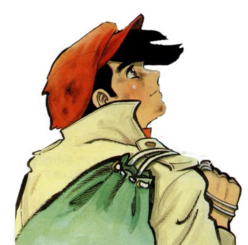
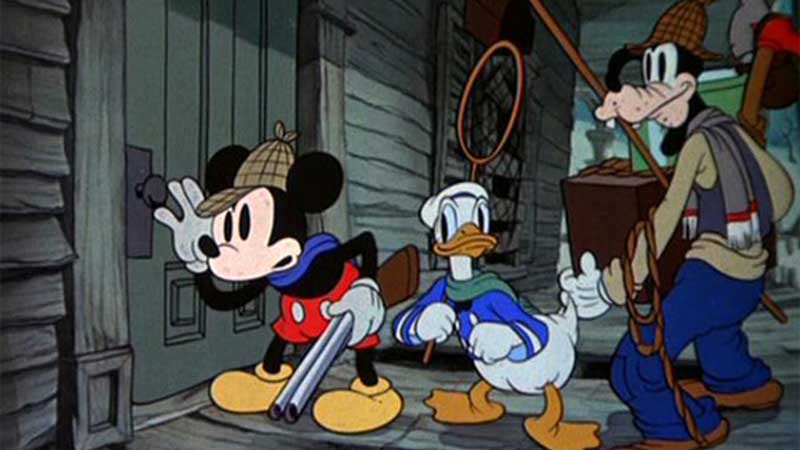
Thanks for posting! The Golden Age was the greatest era.